What is diabetes?
- It is a high metabolic disease that causes high blood sugar (“Diabetes Basics”).
- Sugar also known as glucose is a body’s necessary fuel to sustain.
- Insulin is a hormone that ensures the transfer of sugar from the blood and delivers it into the muscle, liver and fat tissues where sugar is used as energy source or stored for the body to use later.
- If a person does not have enough insulin, sugar accumulates in his blood stream, causing diabetes.
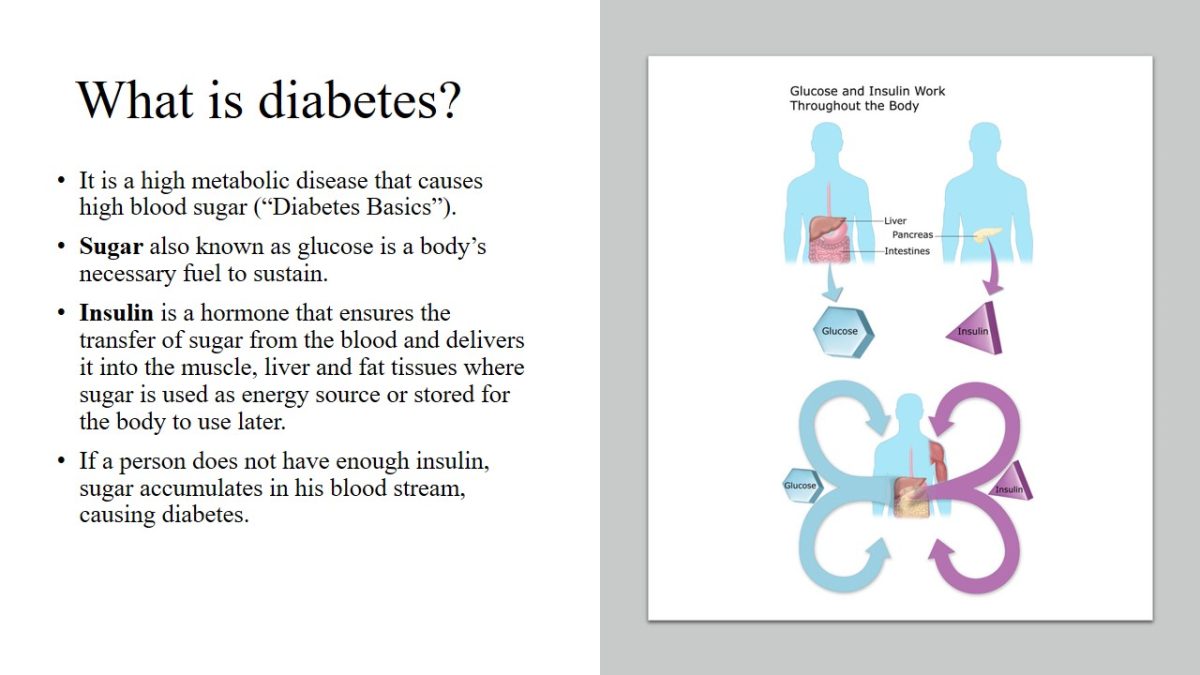
Symptoms of Diabetes
The onset of symptoms may appear suddenly or gradually depending on each case.
- Unexplained weight loss;
- Excessive thirst or hunger;
- Fatigue;
- Frequent urination;
- Blurred vision;
- Nausea and/or vomiting (“Diabetes Basics”).
Once symptoms are notices, immediate medical care is needed.
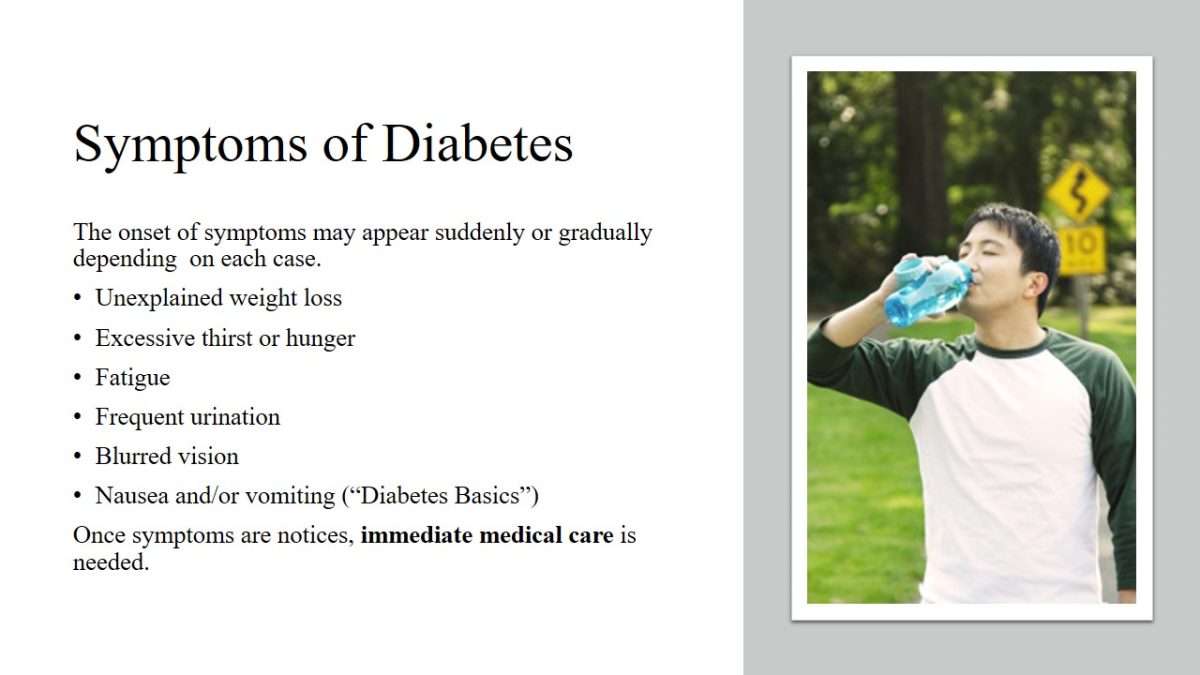
Hypo and Hyperglycemia in the Context of Diabetes
- Hypoglycemia is a condition where the level of sugar is lower than normal. People with diabetes who take insulin more than they need may end up with hypoglycemia. Symptoms of low sugar level if a person has diabetes are weakness, headaches, lightheadedness, and dizziness.
- Hyperglycemia is otherwise a condition where the level of sugar is too high due to lack of insulin in a body. Associated with diabetes, hyperglycemia can lead to vomiting, excessive thirst, rapid heartbeat, hunger, vision problems and other symptoms. Neglecting hyperglycemia can lead to serious health problems.
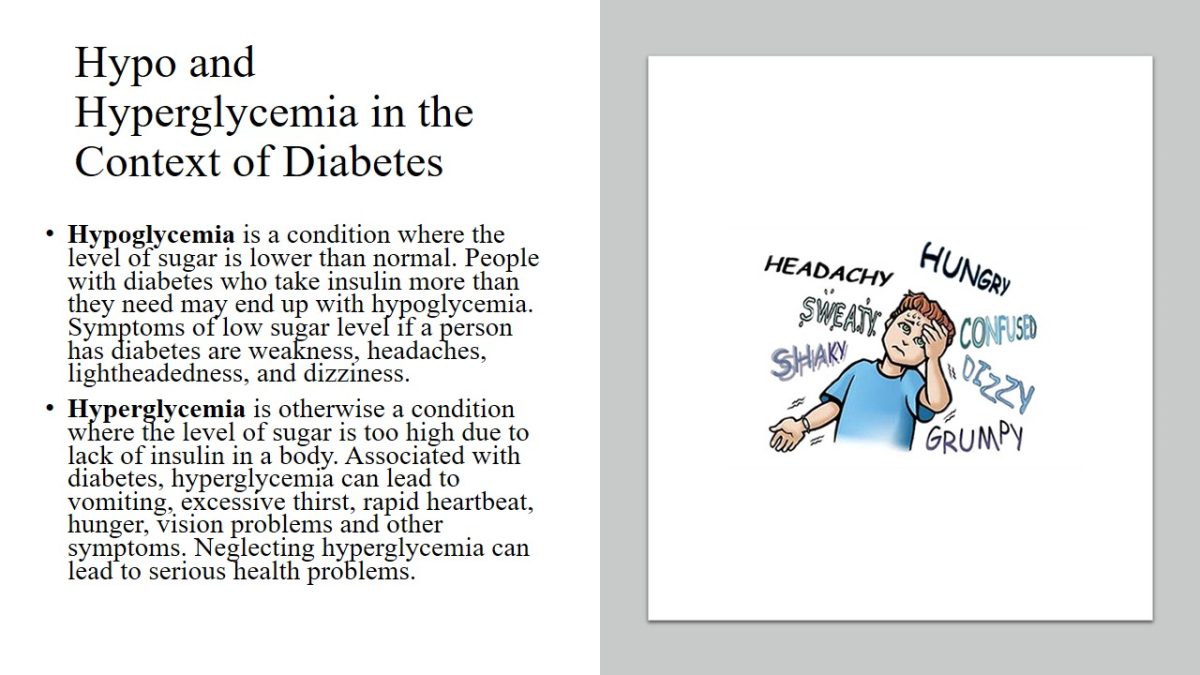
Types of Diabetes
- There are three main type of diabetes: Type 1, Type 2 and gestational diabetes (“Types of Diabetes”).
- Type 1 diabetes is caused by autoimmune reaction that prevent realization of insulin in a body. Estimated 5-10% of people who have diabetes have type 1.
- Type 2 diabetes is caused by a body’s disability to control normal blood sugar level. Most people with diabetes have type 1 diabetes.
- Gestational diabetes develops in pregnant women who have never had diabetes. It leads to high risks of health problems for a baby. After birth, the diabetes stops, but mother has chances to develop type 2 diabetes.
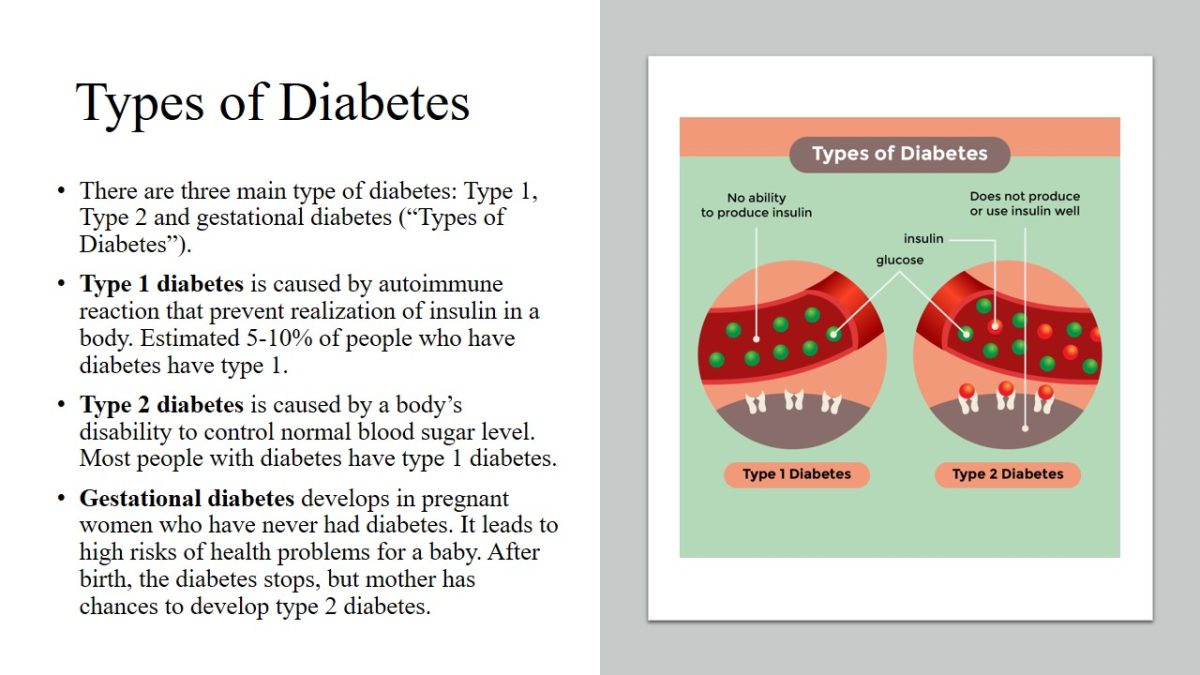
Type 1 and Type 2
- Similarities:
- Type 1 and Type 2 diabetes both occur when the body cannot store and use glucose.
- Both can lead to complications, such as cardiovascular disease, kidney disease, vision loss and other diseases.
- Both types diagnose with A1C or glycated hemoglobin test.
- Differences:
- People with Type 1 do not produce insulin, while the ones with Type 2 do not respond to it or make not enough insulin.
- The cause of Type 1 is the immunes system that attacks insulin-producing beta cells. Type 2 is caused by insulin resistance, the body unable to use insulin.
- Type 2 is more common that Type 1 diabetes.
- Type 1 cannot be prevented, while it is possible to lower risks of Type 2. (“Types of Diabetes”).

Risk Factors of Type 2
If a person:
- is over overweight;
- is 45 years or older;
- has a family member with Type 2 diabetes;
- is not physically active;
- has ever had gestational diabetes;
- is African American, Hispanic/Latino American, American Indian, or Alaska Native, Pacific Islander or Asian American.
He or she has higher risks of developing Type 2 diabetes (“Types of Diabetes”).
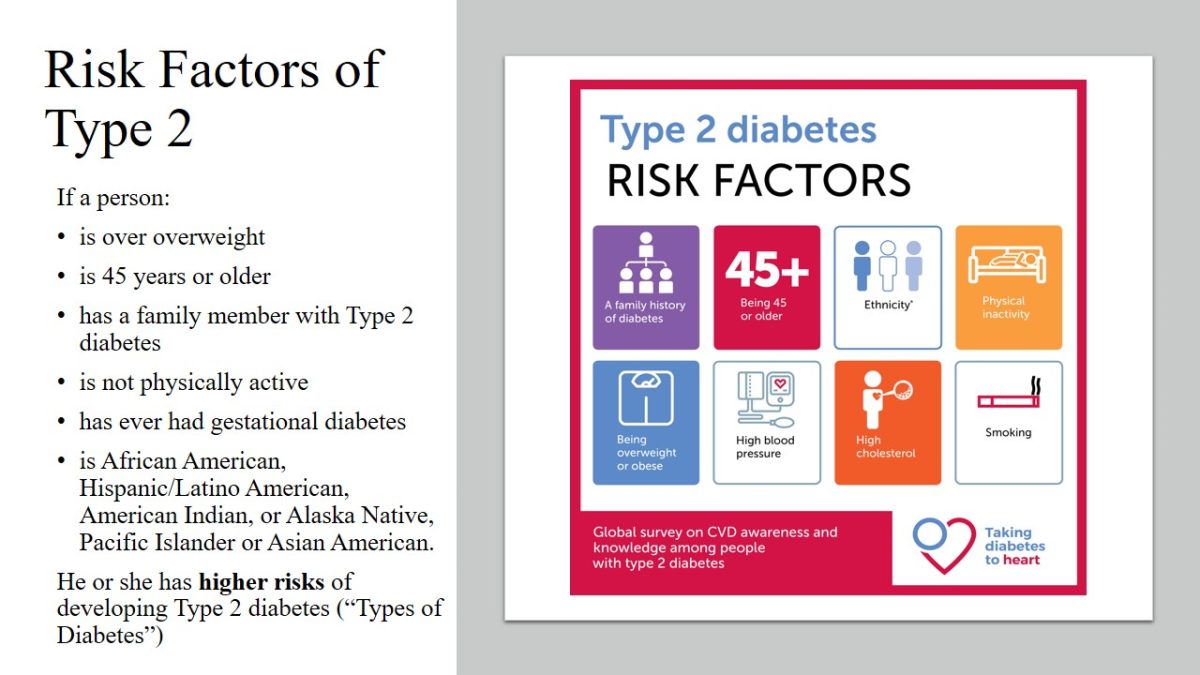
Carbohydrate Intake
- Type 1:
- People with Type 1 do not produce insulin, thereby they should intake insulin though injections or a pump. This will help to lower the blood sugar level.
- People should count amount of carbs they eat each time.
- There are twice-daily insulin and basal bolus insulin regime for Type 1 patients.
- Type 2:
- People with Type 2 should limit the carbs to control their blood sugar levels because high sugar can lead to complications.
- Therefore, people usually go on low calorie diet.

Potential Complications with Type 2
- People with diabetes must be very careful about their treatment and daily life with diabetes.
- Potential complications and frequent cases include:
- Heart and blood vessels disease. Stroke, high blood pressures and narrowing of vessels are severe outcomes associated with diabetes.
- Neuropathy in limbs. High blood sugar levels may damage and destroy nerves causing numbness, burning, pain or eventual loss of feeling.
- Kidney disease that may need dialysis of kidney.
- Loss of vision or eye damage.
- Skin problems, and other complications.
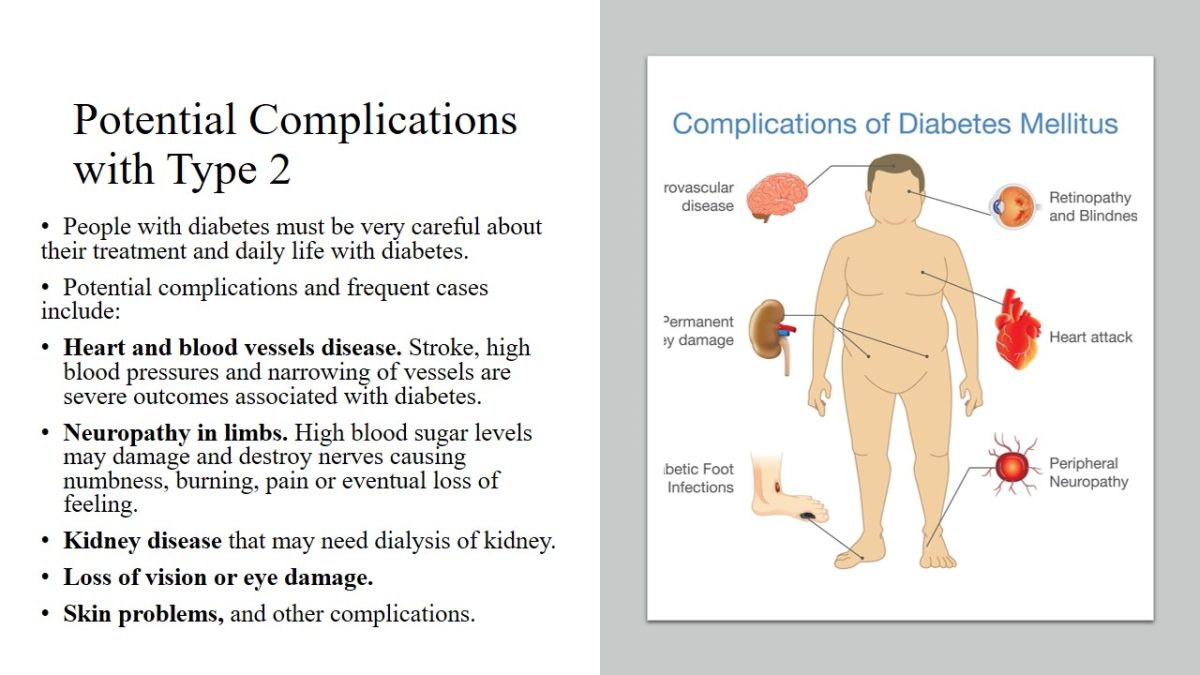
Stress, Exercise, and Alcohol in the Context of Diabetes
- People with diabetes should change their lifestyle by including healthy eating and moderate exercises (“Diabetes”).
- Increased stress level of people with diabetes may result in high blood pressure, rise of heart rate and sugar level. People may feel tried and even depressed. Therefore, people should learn how to manage their stress level to avoid any complications.
- Drinking alcohol (one serving per day for females, up to two servings per day for males) does not significantly affect the blood sugar level. However, mixers like juices or cola can cause increased level of sugar.
- Being physically active may help to lose weight, stabilize mood and control blood pressure, so positively influencing people with diabetes.
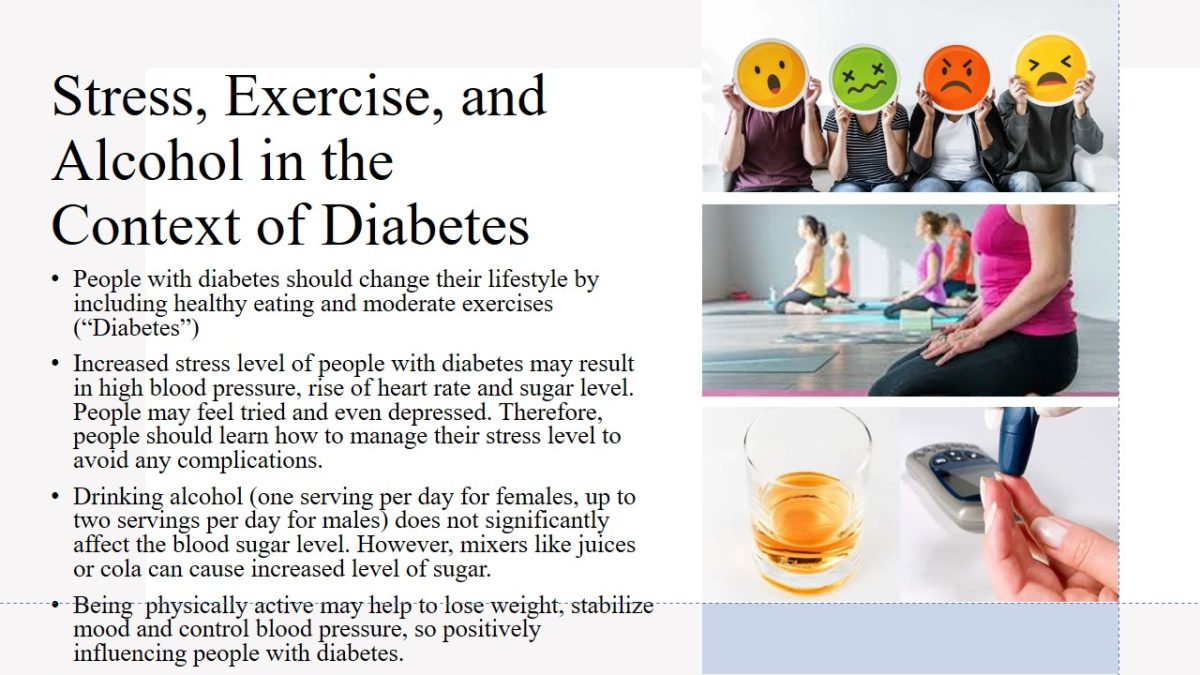
Controlling, Preventing and Reversing Type 2
- People with Type 2 diabetes should have individual diet that is provided by professional. Usually, it is a low-calorie diet with less carbs (“What is Diabetes?”).
- Physical activity is also an important part of controlling and preventing Type 2.
- Quitting bad habits, such smoking and excessive drink of alcohol plays critical role in prevention of Type 2.
- Regular self-monitoring of blood sugar level and controlling food intake should be a daily habit of people with Type 2 diabetes. These measures will help to control the disease.
- By following all medical instructions and having healthy lifestyle, Type 2 diabetes can be reversed.
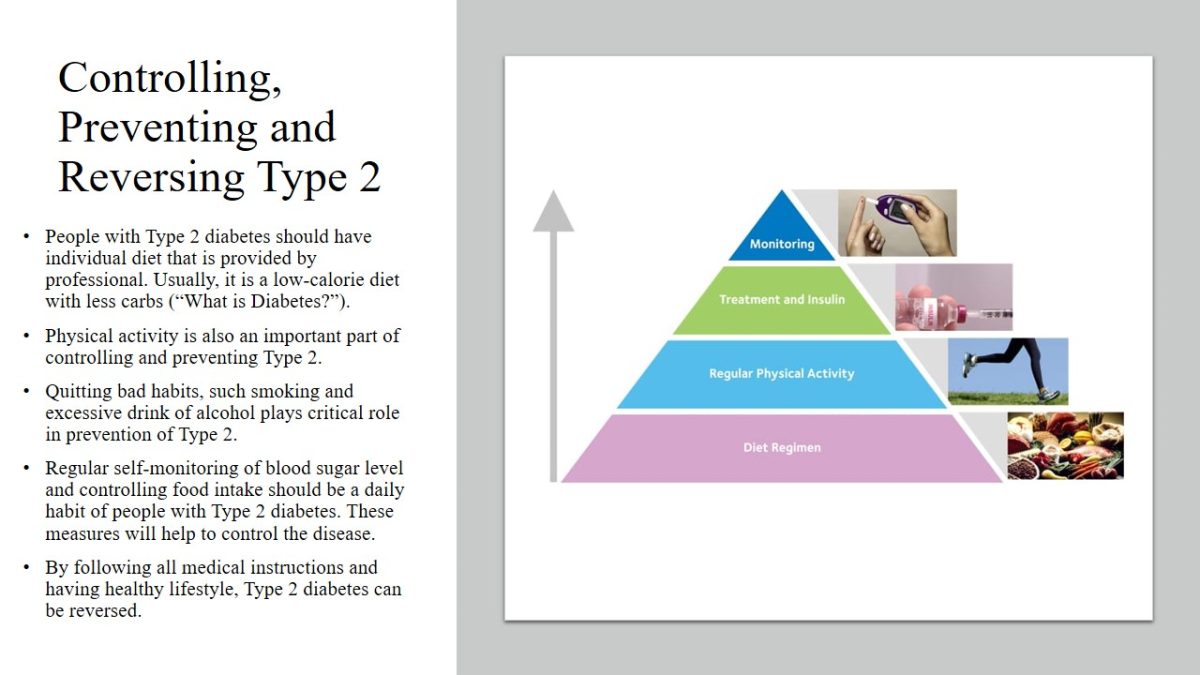
Controlling Type 1
- Unlike Type 2, Type 1 diabetes cannot be prevented and reversed (“Diabetes Basics”).
- However, there are ways of controlling Type 2 to have a normal life.
- People with Type 1 should know their blood sugar goals for a day and how to count cabs. Medication doses are also crucial to know and count.
- Insulin does, food and activity should be maintained every single day.
- Careful listening to a body’s needs and response also critical strategy to avoid any complications. If a person wants to change something, one change at a time is the best option.
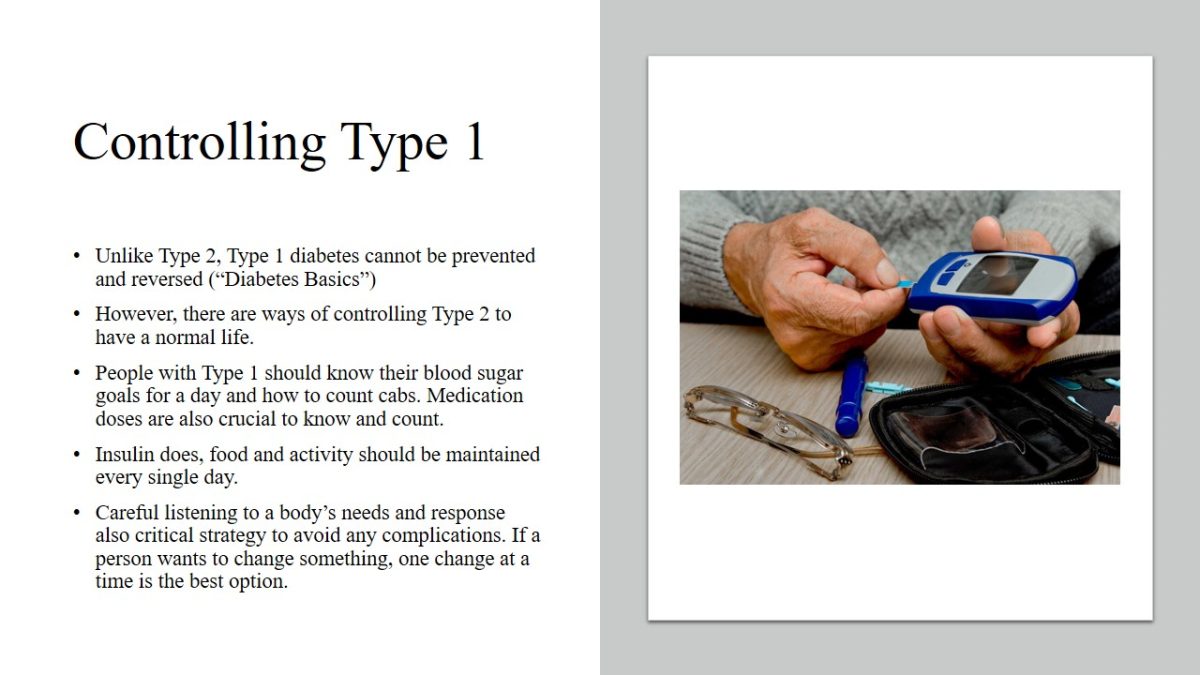
Works Cited
- “Diabetes Basics.” Centers for Disease Control and Prevention. Web.
- “Types of Diabetes.” Diabetes Education Online. Web.
- “Diabetes Diet, Eating, & Physical Activity.” National Institute of Diabetes and Digestive and Kidney Diseases. Web.